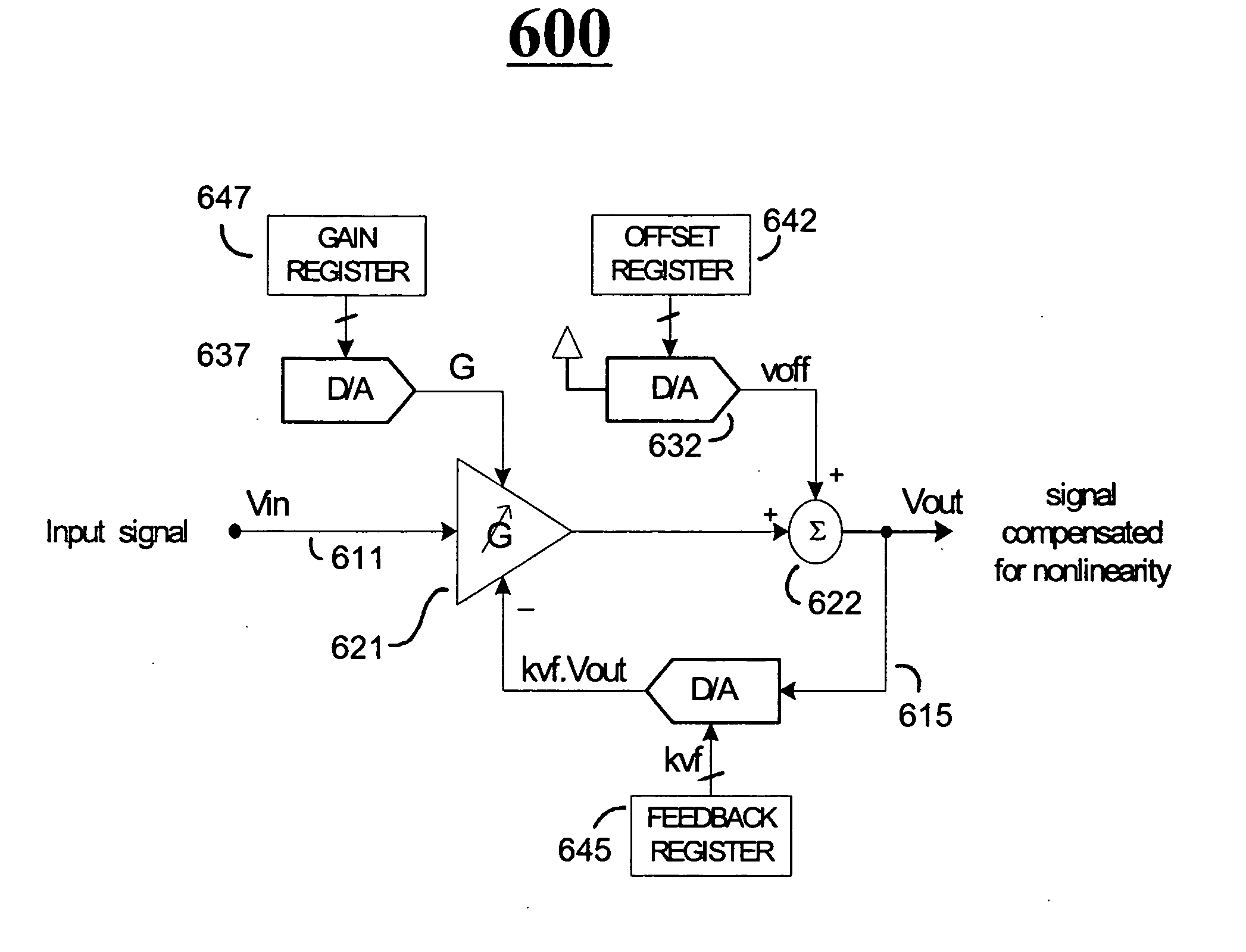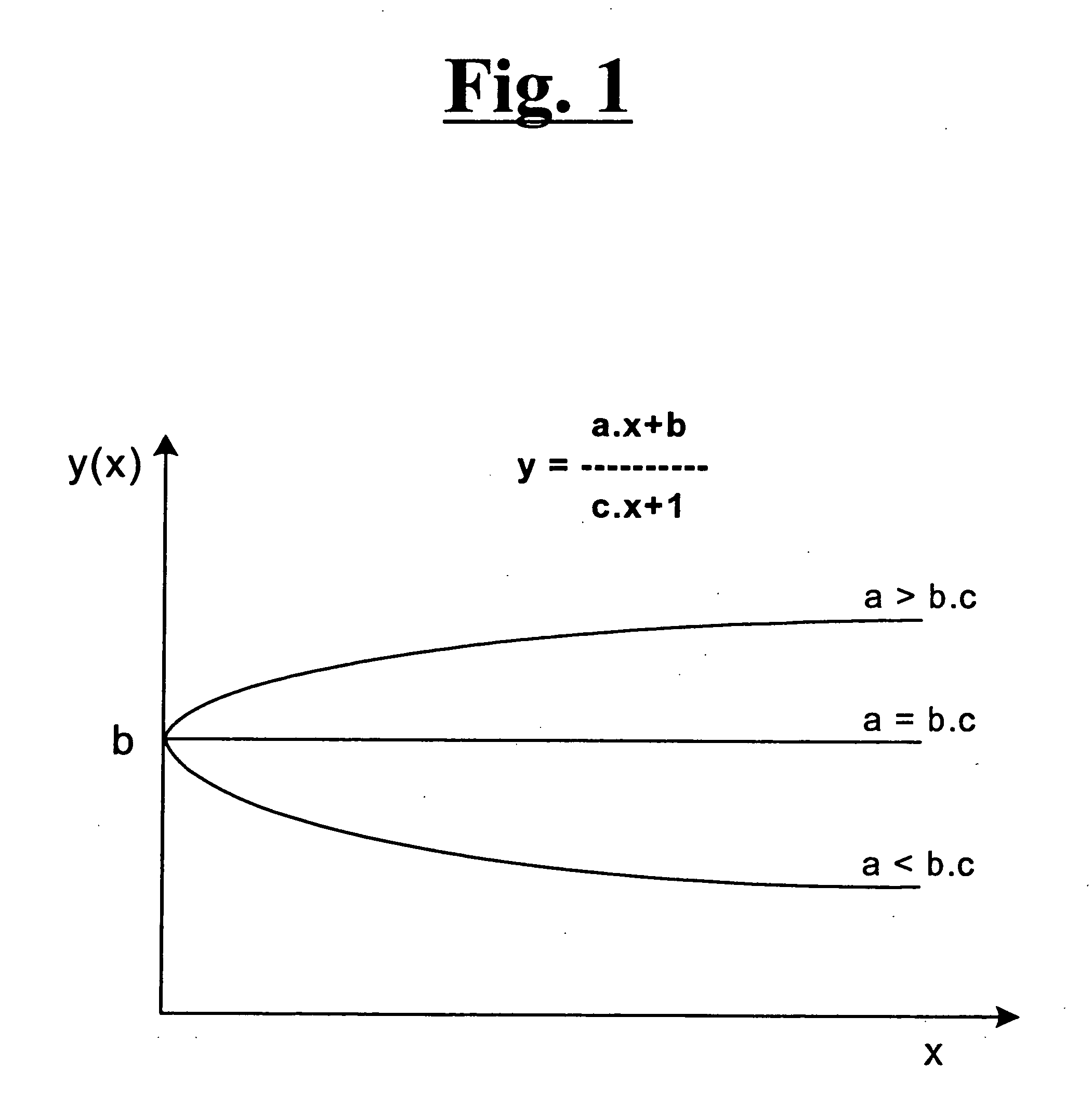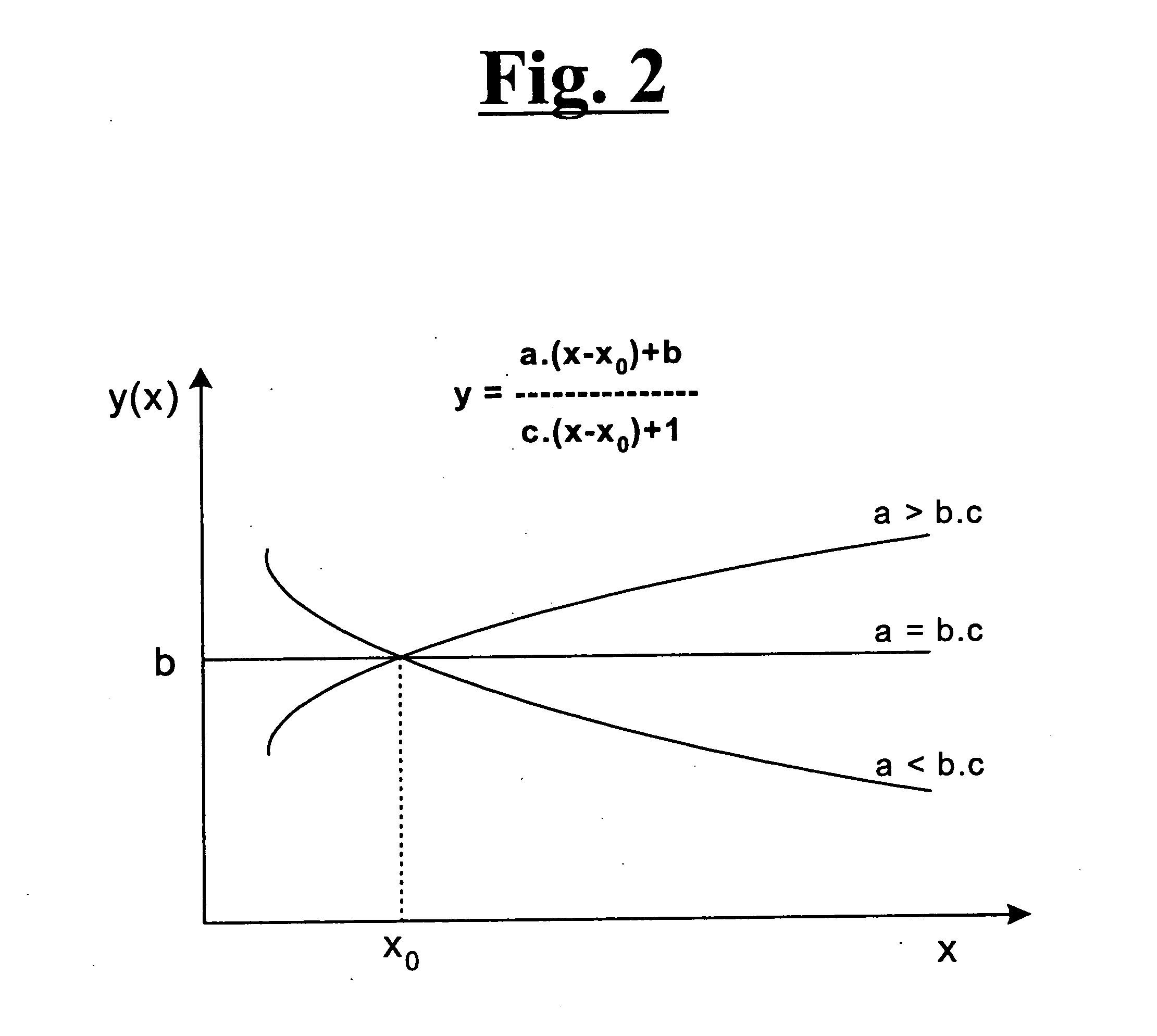Pade' approximant based compensation for integrated sensor modules and the like
- Summary
- Abstract
- Description
- Claims
- Application Information
AI Technical Summary
Benefits of technology
Problems solved by technology
Method used
Image
Examples
embodiment 1000
[0099] Although it is better suited to be implemented by a programmable analog integrated circuit, the invented method for nonlinearity compensation can also have a digital embodiment if the input variable Vin is a digital signal. FIG. 10 shows a digital embodiment 1000 that is roughly equivalent to the analog embodiment of FIG. 6.
[0100]FIG. 12 is a schematic of yet another sensor module 1201 in accordance with the disclosure. The to-be-sensed physical parameter, P(t), is coupled into the module 1201 from the external environment 1200. Coupling may be accomplished wirelessly, such as by magnetic and / or electrostatic coupling. In response to the coupled physical parameter, P(t), a corresponding primary sensor 1205 generates a corresponding, sensor output signal, x(t). In some embodiments, an excitational signal e(t) may be additionally coupled to the primary sensor 1205 from an in-module excitation source 1265. The excitational signal e(t) may be used for causing the sensor 1205 to o...
embodiment 1500
[0116]FIG. 15 is a schematic of an embodiment 1500 having a digital input multiplier (the leftmost D / A converter) at the front end of the mapping circuit and a further digital multiplier receiving feedback from the output.
embodiment 1600
[0117]FIG. 16 is a schematic of a further embodiment 1600 having a 3-input multiplier at the front end of the mapping circuit and 3-input summer before the variable gain amplifier.
PUM
 Login to View More
Login to View More Abstract
Description
Claims
Application Information
 Login to View More
Login to View More - R&D
- Intellectual Property
- Life Sciences
- Materials
- Tech Scout
- Unparalleled Data Quality
- Higher Quality Content
- 60% Fewer Hallucinations
Browse by: Latest US Patents, China's latest patents, Technical Efficacy Thesaurus, Application Domain, Technology Topic, Popular Technical Reports.
© 2025 PatSnap. All rights reserved.Legal|Privacy policy|Modern Slavery Act Transparency Statement|Sitemap|About US| Contact US: help@patsnap.com



